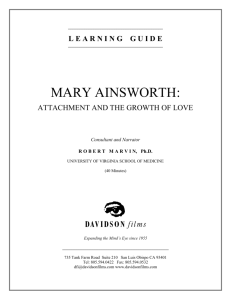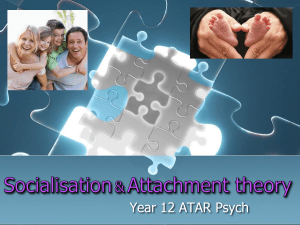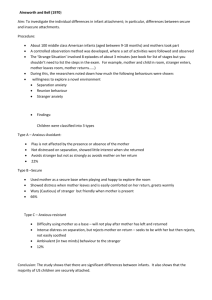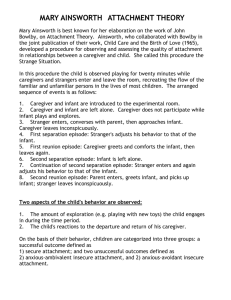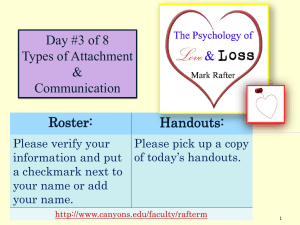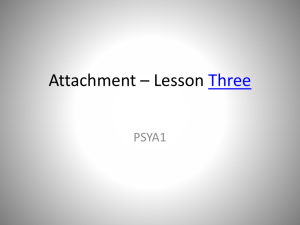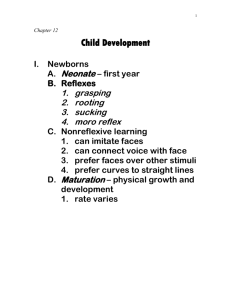Strange Situation Activities
advertisement
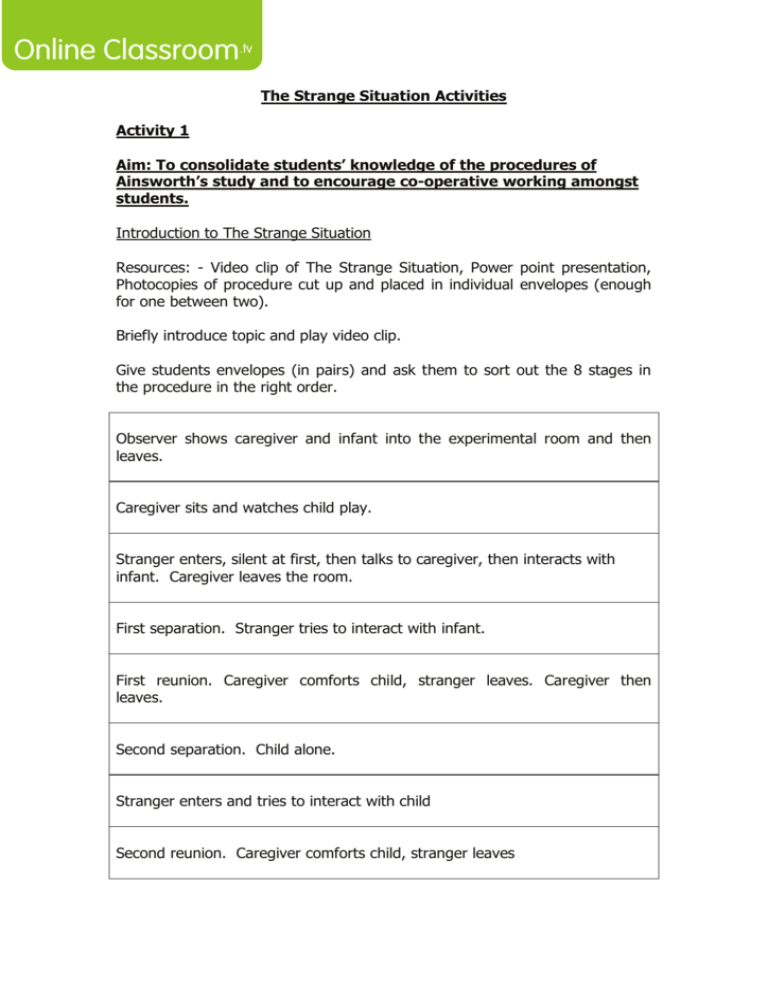
The Strange Situation Activities Activity 1 Aim: To consolidate students’ knowledge of the procedures of Ainsworth’s study and to encourage co-operative working amongst students. Introduction to The Strange Situation Resources: - Video clip of The Strange Situation, Power point presentation, Photocopies of procedure cut up and placed in individual envelopes (enough for one between two). Briefly introduce topic and play video clip. Give students envelopes (in pairs) and ask them to sort out the 8 stages in the procedure in the right order. Observer shows caregiver and infant into the experimental room and then leaves. Caregiver sits and watches child play. Stranger enters, silent at first, then talks to caregiver, then interacts with infant. Caregiver leaves the room. First separation. Stranger tries to interact with infant. First reunion. Caregiver comforts child, stranger leaves. Caregiver then leaves. Second separation. Child alone. Stranger enters and tries to interact with child Second reunion. Caregiver comforts child, stranger leaves Discuss their choices. Go through power point presentation, discussing in detail. For homework you might like to set some short answer questions on the APFCC of this study. Activity 2 Aim: To develop students’ skills of critical thinking and encourage co-operative working practices Evaluation Resources: - Text books and notes from previous lesson. Sugar paper and pens. Put students into small groups 3-4. Ask each of them to concentrate on one evaluation point about Ainsworth’s study. (See table on Powerpoint presentation) • • • Strengths The Strange Situation is a standardised procedure and has been repeated many times. The measurement of attachment is based on more then one behaviour e.g. several separations and reunions. Early identification of attachment problems could mean earlier intervention and the prevention of later problems. • • • Weaknesses The Strange Situation lacks validity because it is a ‘strange situation’ to the child. There are cultural variations in child rearing techniques and this study was originally based on an American sample. Ethics!! Distressing for the child and caregiver. Encourage them to go into depth. Try using the “so what” technique e.g. Ainsworth’s study lacks validity – So what?, It took place in an artificial setting – So what?, The child was not used to it – So what? When your students have finished and made notes on sugar paper, ask each group to visit the other groups to ensure they have a full set of notes. Demonstrate using a writing frame to show how this information would be used in an examination question. Activity 3 Aim: To develop independent research skills and an appreciation of the applications and implications of Ainsworth’s work Resources: - Text books, access to the internet. Place students in three small groups and ask them each to one of the following studies: - Van Ijzendoorn & Kroonenberg (cross-cultural variations in attachment), Hazan & Shaver (The Love Quiz) and Belsky (Day Care, The effects of amount of time spend in day care on attachment). They will need to produce a PowerPoint presentation to share their findings with the rest of the class. Discuss the implications of insecure attachment in adult life. This task could be extended into a classroom debate between those that think an insecure attachment as a child can never be overcome and will lead to difficulties in later life and those that believe that insecure attachment can be overcome (the optimists and the pessimists!) Homework – Exam questions on cross-cultural variations.



